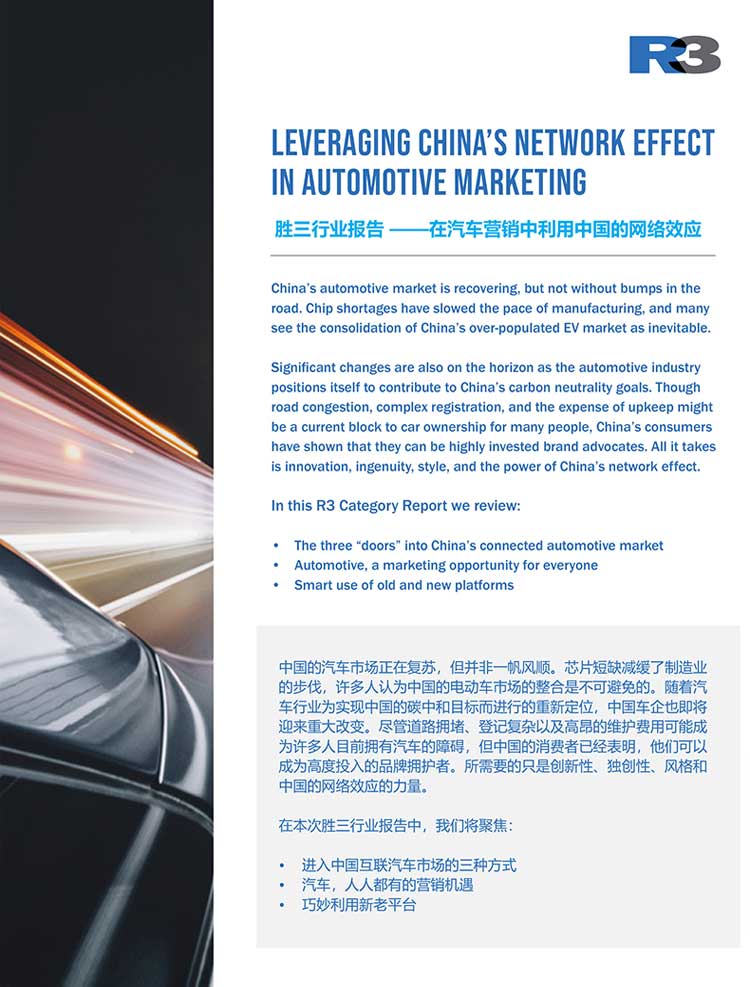China’s automotive market is recovering, but not without bumps in the road. Chip shortages have slowed the pace of manufacturing, and many see the consolidation of China’s over-populated EV market as inevitable. Significant changes are also on the horizon as the automotive industry positions itself to contribute to China’s carbon neutrality goals.
Though road congestion, complex registration, and the expense of upkeep might be a current block to car ownership for many people, China’s consumers have shown that they can be highly invested brand advocates. All it takes is innovation, ingenuity, style, and the power of China’s network effect.
In this R3 Category report, we review:
- The three “doors” into China’s connected automotive market
- Automotive, a marketing opportunity for everyone
- Smart use of old and new platforms
Key Takeaways
- Three types of internet companies involved in building cars in China can be categorized as the “empowerment”, the “ground-up” and the “auto-pilot.”
- The hunt for new audiences has already led to innovations, with luxury car brands adopting the streetwear style of marketing proved effective by luxury fashion brands, while mid-priced passenger vehicles look to categories not traditionally associated with mobility for opportunity and inspiration.
- Automotive brands are looking to hone into existing customer groups by tapping into retailers with brick-and-mortar footprints in smaller cities and thematic events frequented by Gen-Z audiences.

